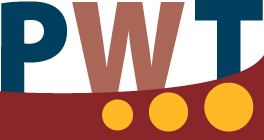As a WOTP teacher, you work hard throughout the year to assess your students’ strengths and challenges, discover gaps in their learning, and adjust the content and approach of your teaching to meet your students’ needs. You also take the time to invite your students to participate in assessing their own learning and encourage them to articulate their own personal goals and interests. So, how does end-of-year evaluation and reporting work within the WOTP?
The Work-Oriented Training Path is described in the Québec Education Plan as “a path in which evaluation is used to support learning.” As a WOTP teacher, you work hard throughout the year to assess your students’ strengths and challenges, discover gaps in their learning, and adjust the content and approach of your teaching to meet your students’ needs. You also take the time to invite your students to participate in assessing their own learning and encourage them to articulate their own personal goals and interests.

Evaluating strengths and challenges
At the end of the year, you have the critical task of translating all of this hard work into a “final grade.” Your training, experience, and professional judgment all stand you in good stead in accomplishing this task, but there are some parts of the process that are unique to the WOTP. So, how does end-of-year evaluation and reporting work within the WOTP? The answer to this question depends upon which program you teach: Training for a Semiskilled Trade (TST) or Prework Training (PWT).
One-year TST program evaluation
Evaluation and reporting for students in the one-year TST program is similar, but not identical, to that for Cycle I Secondary students in the General Education Path. Grades for TST students are reported in percentages, and WOTP teachers refer to the same Frameworks for the Evaluation of Learning as other Secondary Cycle I teachers for the academic subjects.
In addition, there are specific Evaluation Frameworks for the practical training subjects in TST: Preparation for the Job Market (PJM) and Preparation for a Semiskilled Trade (PST).
A thorough understanding of students’ workplace competencies is a must.

Understanding workplace competencies is a must.
PST competencies
In the case of PST, it is essential to ensure that you have a thorough understanding of the competencies that your students developed at their work placement(s) before determining a final grade.
TST exemptions
Finally, the annual Directives published each year by the MEES allow for two important exemptions for students in TST: 1) the report cards do not include group averages, and 2) there is no obligation to include a student’s result for a Ministry exam in the student’s final mark.
Reporting exemptions:
averages and ministerial exams
In other words, TST students are not obliged to write these Ministry-set exams, although they sometimes do. Long final exams or evaluation situations are often not the best format for our students to show what they have learned.
Three-year Prework Training
All of the above information also applies to the PWT program: the same reporting exemptions exist, and it is equally important to track the specific competencies students develop in the Work Skills course.
Use evaluation frameworks to inform your teaching.
Evaluation Frameworks exist for each PWT subject, and it’s helpful to look at these early on in the school year, as they contain important information for both teaching and evaluation.
For example, did you know that in PWT, Math students can provide oral explanations to demonstrate their understanding? Written work not necessarily required!
Grading PWT
In contrast to TST, PWT students receive letter grades, and “end-of-year” grades are not necessarily “final grades”! In PWT, there are several subjects for which the curriculum content is taught over the course of two or three years; a “final grade” is not determined until the end of the time frame for teaching that subject.
For example, Science (Technological and Scientific Experimentation) is taught only during the first year of PWT, so at the end of Year I the teacher determines a grade against all of the content found in the Science curriculum. In contrast, the teaching of English Language Arts spans three years, so it isn’t until the end of Year III that you must determine a final grade against the objectives of the English Language Arts curriculum.

PWT teachers have freedom
and the obligation to adjust pace.
Throughout the time frame required to teach a subject, PWT teachers have both the freedom and the obligation to adjust the pace of teaching, and the goals for learning, in accordance with their students’ needs and IEP, and students are graded against these goals.
The following two grids explain this distinction and are taken directly from the Ministère de l’Éducation et de l’Enseignement supérieur website under the Frameworks for the Evaluation of Learning:
Rating scale
The results recorded in section 2 of the report card prescribed by the BSR must be communicated using the following rating scale:
A = The student meets the requirements set for him/her very well.
B = The student meets the requirements set for him/her.
C = The student partially meets the requirements set for him/her.
D = The student does not meet the requirements set for him/her.
However, if it is for a subject that will no longer be taught in the subsequent year, the final result in the last report card of the school year is communicated using the following rating scale:
A = The student meets the program requirements very well.
B = The student meets the program requirements.
C = The student partially meets the program requirements.
D = The student does not meet the program requirements.
Passing grade
It is very important for PWT teachers to know that a “C” is not a passing grade; only A’s and B’s indicate success!
After you have duly recorded your end-of-year grades, the school and school board must ensure that these results are properly sent to Sanction des Études for students who have successfully completed either the TST program, or the full three-year PWT program, so that they can be certified.
Next steps
Of course, the next steps that our students take after certification are important to us, too. Watch this new WorkPress: WOTP Community News for more on work and learning options for our students, coming soon!
Contributed by
Ingrid Hove Gust
WOTP Project Development Officer
Summary of Links in this Article
Québec Education Plan. Go to site.
Frameworks for the Evaluation of Learning. Go to site.
Directives. Go to site.

[…] of year evaluation and reporting is based on year-long assessment(s) (for more info on this see- Making the Grade: End of Year Evaluation and Reporting). Due to the Coronavirus (COVID-19) pandemic, students were unable to complete their practicum […]